Legally Speaking
Let’s analyse the new information technolgy 2021 rules for social media
Published
4:41 am ISTon

INTRODUCTION
Social Media firms in India have to comply with the New Information Technology ((Intermediary Guidelines and Digital Media Ethics Code) Rules 2021 which was released by the Government of India on 21 February, 2021. These rules have been framed in exercise of powers conferred under Section 87 (2) of the Information Technology (IT) Act, 2000.Social Media Firms were given three months to implement these new Information Technology Rules by the Government. In 2000, Information Technology was limited to electronic document, e-signature and digital authentication of records. Social Networking Firms arrived in India in 2005. Internet access at home by people of India has increased since 2010 and the cost of data per Gega Byte was also decreased with the introduction of 4G internet.


There is an urgent need to look into this matter so the Government of India has passed new rules under IT Act, 2000 and introduced Section 69A(2), 79(2)(c) and 87 in the Act. New Information Technology(Intermediary Guidelines and Digital Media Ethics Code) Rules 2021 has replaced the IT Rules, 2011. These new IT Rules, 2021 has directed social media platforms to strictly adhere to the guidelines but currently no social media firm has complied with the IT Rules 2021. AS we all know, every action has a positive and negative aspect and similar is applicable in this instance too. This article gives a bird’s eye view on the New IT Rules 2021, its advantages and glaring ambiguities which appears to be in conflict with the fundamental rights and basic principles of a democratic country.
WHY THERE IS A NEED OF NEW INFORMATION TECHNOLGY RULES, 2021
New Information Technology Rules 2021 is set to empower the ordinary social media users and the main goal of the IT Rules are on the protection of women and children, false spreading of fake news and misuse of social media. Social media has become an integral part of an individual’s life.As we all know that, the engrossment of each individual on these social media platforms have massively increased and thereby lead to the emerging of new challenges like offence against women and children, threat to the security and integrity of the state etc.With such a large user base, tech firms cannot afford to overlook new and developing concerns such as the continuing dissemination of false news, widespread abuse of platforms to post manipulated photos of women, deep fakes, and other content that threatns the dignity of a women and poses a security risk. Since 2020, there are around more than 25000 videos of child sexual abuse content which is circulated on the social media platforms.
In India, there is no regulatory authority to monitor and manage the offensive content on the social media firms and hence, the government decided to put these intermediaries on the same pedestal like Press Code and Program Code under CableTelevision Networks Regulation and Central Film Certification Board.Considering such arising difficulties,In Tehseen S. Poonawalla v/s Union of India case, Supreme Court guided the public authority to control and stop dispersal of explosive messages and recordings on different web-based media stages which tend to induce violence or mob lynching. In 2017, Court saw that the public authority may outline essential rules to stop child pornography, rape and rape images,recordings and sites in content hosting platforms and other applications. So, after considering all the concerns and keeping in mind the Supreme Court directions in case laws, Government implemented New Information Technology Rules, 2021 to get rid of these serious concerns.
OVERVIEW OF NEW INFORMATION TECNOLOGY RULES 2021
Government of India made new guidelines under Information Technology Rules 2021 for social media intermediaries as they believed that it was the need of the hour. The new guidelines are:
* Social Media Divided in two groups on the basis of the number of users i.e.
SOCIAL MEDIA INTERMEDIARIES (LESS THAN 50 LAKH USERS)
Significant Social Media Intermediaries(More than 50 lakh users or 5 million registered users.
Here, Social Media companies are referred as Intermediaries as they create link between the people.
* Due diligence to be followed by the intermediaries to be extra cautious that they allow their user to post on their handle.If social media firms don’t follow this guideline then they end up in loosing their immunity under Safe Harbour Provisions defined in Section 79 of the Information Technology Act. Section 79 of the IT Act function both as an immunity and a restrictive provision for social media companies.
*Social Media firms mandatory appoint a Grievance Redressal Officer who will act as a mediator between Government of India and social media. These grievance officer acknowledge any complain received from the government within 24 hours and resolve it within 15 days from its receipt.
*Social Media firms had to ensure online safety and dignity to the users thereby removing or disable the access of content which exposes the private area of an individual or show some individual in partial or full nudity or some sexual act or si in the nature of impersonation including morphed images within 24 hours of receiving complaint. The complaint can be filed either by an individual or any other person on his/her behalf.
* Social Media Firms should appoint a Chief Compliance Officer, Nodal Contact Person and Resident Grievance Officer and they should be resident of India. Government had instructed the intermediaries to publish new monthly compliance report which contains all the details about complaints received and action taken.
*Government has instructed Significant Social Media Intermediaries to provide information of the first originator in case if the content which is posted threatns the sovereignty and integrity of India, security of the state, disturbs friendly relations with any country, disturbs public order by incite riots, or any kind of offence in relation with rape, sexually explicit material or child sexual abuse material. Social media is bound to give the information of the first originators to Indian Law Enforcement Agencies in these particular cases.
*Government had instructed intermediaries to remove unlawful information upon receiving an court order or being notified from appropriate government if it threatens the sovereignty and integrity of India, security of the state, disturbs friendly relations with any country, disturbs public order by incite riots, or any kind of offence in relation with rape, sexually explicit material or child sexual abuse material.
PROS AND CONS OF IT RULES 2021
The new IT Rules also known as the “Information Technology (Guidelines for Intermediaries and Digital Media Ethics Code )Rules , which was issued by the government contains some advantages & some disadvantages. Let’s discuss them in brief.
PROS
IT Rules 2021 curbs the problem which is created by the rapid growth of child pornography, hate speech, spread of misinformation and digital bullying on the platform of Digital World. These rules empowers the government to regulate the uncensored media platforms such as Netflix, Amazon Prime, The Wire, The Print, WhatsApp, Telegram. In order to regulate social media content, the government can ask the platform to disclose the originator of the message as per the new IT Rules. It also removes the bad content and helps people in gaining accurate knowledge through social media and also keeps children away from watching sensitive content which will have negative impact on them. OTT platforms will self-classify contents into five age-based categories: U(Universal), U/A 7+(yrs), U/A 13+, U/A 16+ and A(adult). There will also be parental lock for any content classified as U/A 13+ or above. It provides guidelines for setting up of dispute resolution mechanism for the removal of content. It removes non-consensual intimate pictures within 24 hours and also releases compliance reports to increase transparency.
CONS
One of the main disadvantage of new IT Rules 2021 is that it infringes the fundamental right to privacy of many users on social media platform as it allows the intermediaries to break end-to-end encryption of WhatsApp to track the “first originator “of the information whenever asked by the government under Section 69A of the IT Act[Rule 4(2)]. These rules also curtail the fundamental right to free speech of the digital news media because of the involvement of the government. There is excessive control over digital news and OTT content.
NEW IT RULES VIS A VIS ARTICLE 19 OF INDIAN CONSTITUTION
The new IT Rules 2021 was made with aim to protect citizens from cybercrime and digital bullying, but on the contrary rules end up in violating the fundamental right to privacy and freedom of speech and expression guaranteed under Article 19 of the Indian Constitution. After the New IT Rules were passed Government gave a time period of three-months to comply and share the details of the compliance with the new IT Rules. But some social media platforms and digital news entities are against the law as according to them it violates the privacy of the customers and restricts their freedom of speech and expression. And hence, the case was filed against the Government in the Delhi High Court by Whatsapp on the ground that new rules violates the user’s privacy. Some Digital News Media like The Wire, LiveLaw and The Quint also challenged the new Intermediary Guidelines and Digital Media Ethics Code.
Whatsapp has raised its serious concern regarding the provision of “traceability”. As per the provision, the social media intermediary is required to identify the “first originator of information” of messages when required to do so by the authorities. For this to be done , the intermediaries will have to break the end-to-end encryption, which in turn weakens the security and privacy of its users.
As per, Sec 3 & Sec 4 of the new IT rules, the intermediaries will have to remove the online content when asked by the government through notice. This will violate the right to free speech under Article 19 of the Indian Constitution, as now the government will regulate all online speech & any discussion against government will be muted.
Twitter has also expressed its concern with regard to the violation of free speech by the new rules. It put forth a condition that if the new rules will be guided by principles of transparency and freedom of expression under the rule of law, then only it will comply with the law.
The new IT Rules 2021 has both the positive and negative impacts on the society. But violating the fundamental right to privacy & freedom of speech can hamper the democracy of the country.
New Information Technology Rules 2021 is set to empower the ordinary social media user and the main goals of the IT Rules are the protection of women and children, stop spreading of fake news and misuse of social media. Social media has become an integral part of an individual’s life.
The Daily Guardian is now on Telegram. Click here to join our channel (@thedailyguardian) and stay updated with the latest headlines.
For the latest news Download The Daily Guardian App.
You may like
Legally Speaking
Enforcement of foreign arbitral awards in India
Published
1 day agoon
October 22, 2021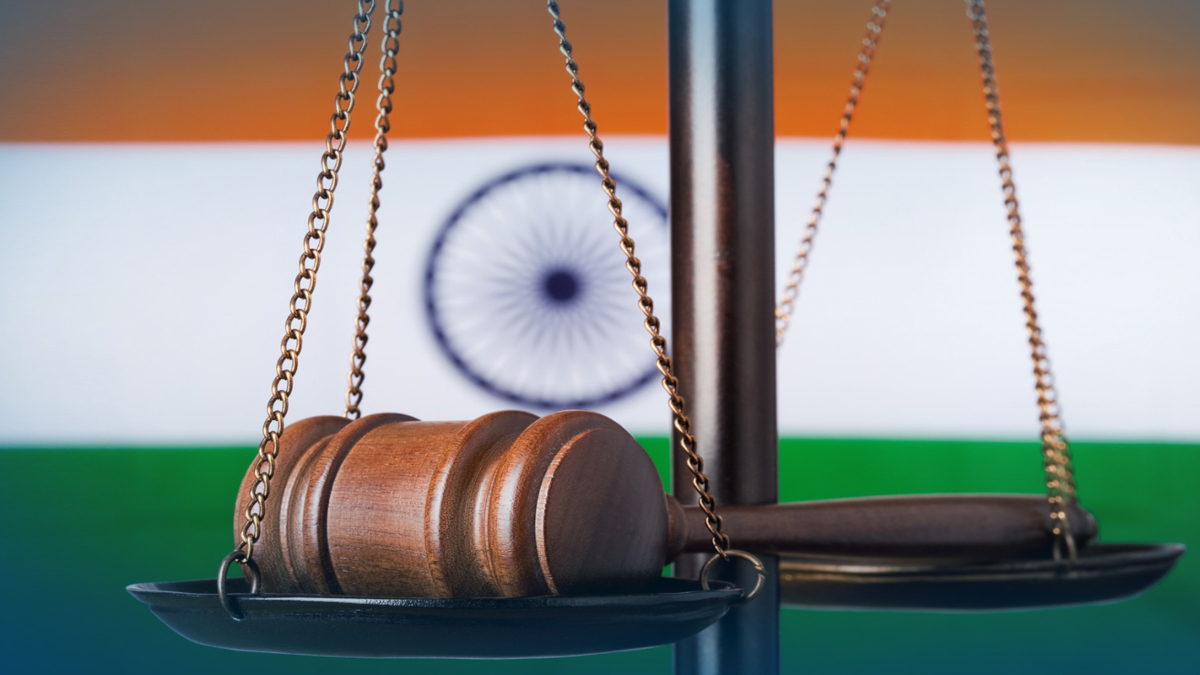
Arbitration proceedings in India were primarily governed by three main legislations namely the Indian Arbitration Act 1940, the Arbitration (Protocol and Convention) Act 1937 and the Foreign Awards (Recognition and Enforcement) Act 1961. The purpose of enacting the mentioned legislations was to comply with international standards of recognition and enforcement. This would ensure that India progressed in its goal towards becoming a pro-arbitration regime. Having ratified the Convention on the Recognition and Enforcement of Foreign Arbitral Awards, 1958 as well as the Geneva Convention on the Execution of Foreign Arbitral Awards, 1927, it was incumbent upon India to enact appropriate legislation to implement the provisions of these Conventions in letter and spirit. This resulted in the enactment of The Arbitration and Conciliation Act, 1996 (hereinafter the Arbitration Act) – the sole statutory instrument governing the recognition and enforcement of arbitral awards in the Indian subcontinent. The comprehensive 1996 Act replaced the previous three legislations and bolstered India’s strategic position as a hub for International Commercial Arbitration (hereinafter ICA).
Arbitration proceedings can often be mired with a number of issues brought about by a conflict in jurisdiction, thereby making unlikely for parties to resort to litigation owing to the complexity of such disputes. The impact of the arbitration proceedings is also determined by the agreement, mutually agreed to by the parties, governing the dispute as well as the powers vested with the tribunal to settle issues related to jurisdiction – where the awards may be recognised and subsequently enforced. Parties to such a dispute are often reluctant to rope in the judiciary of their respective domestic jurisdictions as it would result in a loss of autonomy of the arbitration tribunal to the judiciary. The very purpose of creating such an alternate dispute resolution mechanism was to prevent intrusion by the judiciary. Arbitration was to serve as a forum for the fast-tracked settlement of commercial transactions between (mostly) private parties.
In this article, I shall examine whether the intention of reducing judicial interference in the enforcement stage, of arbitral awards, has remained intact. I shall specifically limit my piece to the 1996 Act that deals with the enforcement of foreign awards in India.
Analysing the scope of International Commercial Arbitration in India
Before delving into judicial trends regarding the enforcement of foreign awards, it is important to mention that Part II of the 1996 Act is following the prescribed guidelines of the New York and Geneva Conventions, thereby effectuating the same. India is not a signatory to any treaty that mandates that the country recognise the enforcement of foreign awards. Had India been a party to the Convention on the Settlement of Investment Disputes Between States and Nationals of Other States [(Washington, 1965) hereinafter ICSID Convention], the circumstances would have been different as it would have to adhere to its provisions and ensure that foreign arbitral awards are recognised and enforced by its domestic statutes.
It is of utmost importance to lay down the purview of ICA and what proceedings and substantial laws can be brought within its scope. ICA refers to arbitral proceedings pertaining to issues emerging out of legal alliances – contractual or otherwise, that are deemed commercial within Indian law or in which at least one of the disputing parties is a person who is now a citizen of, or continually resides in, any nation apart from India; or a corporate entity that is established in any nation apart from India. The Supreme Court, in the case of R. M. Investment Trading Co. Pvt. Ltd. v. Boeing Co, dealt with the parameters defining a commercial transaction. In its judgment, the Court went on to highlight the practice that influences the framework of business relationships, emphasizing that international commerce is more than just the movement of commodities with contemporary complexities. The Supreme Court decided, in accordance with the same reasoning, that a commercial purchase is deemed to be the advisory service for advertising sales and therefore any conflict of this sort arises.
One of the significant benefits of ICA is its cross-border enforceability. In other terms, an award made in one nation can be easily transferred to others and executed. The predominant cause of this convenience of compliance is the 1958 New York Convention on the Recognition and Enforcement of Foreign Arbitral Awards, that has over one hundred ratified states as of today. The New York Convention requires all international arbitral awards to be recognized if they follow such minimum prerequisites.
The term “intervention” may never seem to be sufficient because arbitration is a legal process founded on the sovereignty of the stakeholders and is accepted by statute as an acceptable method of settling conflicts. As a result, the function of the judiciary must be confined to assisting the arbitral tribunal in achieving the goal of resolution. The sovereignty of the stakeholders to consent on the “laws of the proceedings” is perhaps the main basic concept guiding the Model law. This appreciation of the stakeholders’ rights is the culmination of public policy tailored to international practice, as well as the acknowledgement that arbitration is based upon on stakeholders’ arrangement. While it has been identified that judiciary have all the authority to overturn arbitral awards if they violate any constitutional clause, are patently unconstitutional, or violate India’s policy decisions.
Recognition & Enforcement of Arbitral Awards in India
There have been primarily two main distinctions among enforcing an international award and enforcing a domestic award. As previously mentioned, a domestic award would not necessitate a request for compliance. Once the challenges (if any) are overruled, the grant will be executed as a decree of its own. An international award, on the other hand, must go via a compliance process. The group demanding enforcement must submit an appeal for the same. If the court determines that the international award is enforceable, this becomes a court order which is effective as such. Another distinction among the domestic and international regimes is that contrary to domestic awards, there is no allowance for reserving a foreign award. Where it comes to international awards, courts in India can only impose them or fail to implement them; they cannot leave them away. An attempt was made by the Supreme Court to fill this ‘gap’ in the latest decision of Venture Global where the court ruled that it is lawful to set aside an international award in India using the terms of Section 34 of Part I of the Act.
Two conditions must be met in preparation for an international award to be recognized (for the purposes of the Act). First, it should comply with disagreements resulting from a contractual arrangement (whether contractual or not) that is deemed commercial under Indian law. The second scenario is more important: the nation at which the award was granted should be one that the Government of India has designated as a state to which New York Convention extends. Thus far, only just few nations have indeed been told, and so only awards made in those countries are recognized as international awards and legally binding in India.
The reasons for contesting an arbitral award can vary amongst nations. Nevertheless, this does not grant judges in the administering territories concurrent authority. A straightforward interpretation of the Act’s scheme and rules leads to the presumption that such concurrent authority is prohibited in the case of Convention Awards. In the landmark judgment of Bhatia International v. Bulk Trading S.A. and Anr, the parties to a multi-jurisdictional agreement agreed to resolve the disagreement by arbitration under the laws of the International Chambers of Commerce, Paris, with Paris as the lex arbitri. Concerned about the enforceability of Non-Convention Awards, that is, awards that are not recognised for compliance under Section II of the Act, the international party appealed to Indian courts for temporary steps dependent on a provisional award to protect the assets of the Indian applicant to the Arbitration.
In conclusion, the Indian Supreme Court ruled that Part I of the 1996 Act, that provides validity to the UNCITRAL Model Law by granting authority to an Indian judiciary to administer temporary steps notwithstanding the fact that the arbitration was conducted out beyond India, was unconstitutional. Academics and theoretical stalwarts have been outraged by the Supreme Court’s ruling. It has also been asserted that perhaps the Bhatia declaration of court did not provide Convention Awards under Part I. This renders the decision in the Bhatia dispute much more daunting to align with a straightforward interpretation of the law. If national awards are known as non-international awards and international awards are not national awards, the definitions of both domestic and international awards are inadequate. The system of compliance under the Act’s two Parts necessitates a difference among the two awards. Domestic awards which are rendered the focus of proceedings in India pursuant to Section 34 of the Act may be applied as if they were a decision of an Indian Court pursuant to Section 36 of the Act. International Awards should be carried out as a decision by an overseas judge.
It is worth noting that in many recent cases involving an international party, the Supreme Court has reiterated the decision of the Court in Bhatia and maintained that “the requirements of Part-I of the 1996 Act will be equally relevant to enforcement of foreign arbitral awards held beyond India, except some of the said requirements are specifically exempted by arrangement.” These proceedings show the Indian courts’ proclivity to intervene with both national and international arbitral awards. Although this contingency can be avoided, it is likely to incorporate arbitration clauses in the arrangement. Therefore, it is also not relevant if the conditions of dispute there under section 34 of the Act as well as section 48 of the Act are all the same. This debate is important to the legitimate assumption that an international award is legitimate and obligatory upon acceptance by the appropriate agency in India.
Furthermore, Section 48 (1) (e) of the Act states unequivocally that international awards must be binding under the constitution of the country where even the ‘challenging jurisdiction’ is asserted. This simply indicates a distinction among ‘challenging jurisdiction’ and ‘enforcement jurisdiction’. The regulations pertaining to the legal enforcement of foreign arbitral should address dual public policy objectives: first, restricting the judiciary’s review of the substance of the case and the arbitral tribunal’s decision thereunder in giving effect to the shareholders’ preference of dispute resolution; and the second, indicating the judiciary’s intrinsic supervisory preferences in modifying the arbitral tribunal’s ruling. In the field of multinational business transactions, the former takes precedence over the latter.
The underlying cause of all difficulties in enforcing/challenging awards has resulted from the judiciary’s ever-expanding authority to examine the awards, whether domestic or foreign. Increased judicial intervention, that results in the acceptance of a vast number of claims which could never be heard in the first instance, is another vice which impedes the resolution of business conflicts, thus slowing the country’s economic learning and expansion. Another major drawback that has been raised as a result of the Act’s reading would be that the time frame for enforcing the arbitral award is not specified. By not imposing a deadline on the execution of awards, one discovers that the excessive irregularities in arbitral proceedings are no special from those countless awaiting legal proceedings, thereby undermining the Act’s very clauses. Arbitration is seen as a lengthy legal procedure by the stakeholders and adjudicators, who are often former judges, who rely on lengthy and regular continuances to prolong the process entirely.
Conclusion
The aspects of efficiency and expense are the distinguishing features of the process and are frequently cited as the chief factors of why arbitration significantly outperforms litigation as a viable option for resolving disputes, notably in commercial matters. It should be noted that these flaws have the potential to thwart the advancement of foreign trade and economic arbitration, but with the increasing influx of foreign of industry, this may have a negative impact on our economy. Another way to reduce the chance of judicial interference is to arrange for an approving body, which restricts the participants’ right to appeal to the court system for the nomination under Section I of the Act.
The current era of globalization has resulted in the economy’s market and operational circumstances highlight the benefit of arbitration as a conflict settlement mechanism over lawsuits, particularly in terms of multinational conflicts. The 1996 Act was passed in order to facilitate rapid and premium dispute settlement. A review of how this mechanism works in India shows that arbitration as an entity is still emerging and has not yet been successful in meeting the ever demands of the global market that are essential to commercial growth. A world trade and trade arbitration scheme has been proposed that promotes foreign trade and commerce by decreasing the possibility of future economic conflicts being resolved by national courts. Regardless of the unanswered issues that haunt the proposed model organisation, sensible individuals do not want the hassle of seeing future conflicts resulting from their dealings challenged in court before several rather separate upper ranks, including the arbitral entity, the courts at the seat of the arbitration, and the court at the position of compliance.
It is worth noting that in many recent cases involving an international party, the Supreme Court has reiterated the decision of the Court in Bhatia and maintained that “the requirements of Part-I of the 1996 Act will be equally relevant to enforcement of foreign arbitral awards held beyond India, except some of the said requirements are specifically exempted by arrangement.” These proceedings show the Indian courts’ proclivity to intervene with both national and international arbitral awards. Although this contingency can be avoided, it is likely to incorporate arbitration clauses in the arrangement. Therefore, it is also not relevant if the conditions of dispute there under Section 34 of the Act as well as Section 48 of the Act are all the same. This debate is important to the legitimate assumption that an international award is legitimate and obligatory upon acceptance by the appropriate agency in India.
Legally Speaking
TECHNOLOGICAL INTERVENTION IN CLINICAL LEGAL EDUCATION DURING THE PANDEMIC
Published
2 days agoon
October 21, 2021
INTRODUCTION
Former Justice Dharmadhikari once said that the “Legal education makes lawyer an expert who pleads for all like the doctor who prescribes for all, like the priest who preach for all and like the economist who plan for all.” However, during the covid 19 legal education has seen the wrath of pandemic and as a consequence from classroom to courtroom has witnessed the new normal that is virtual platform. Legal education which is clinical in nature was adversely affected during the pandemic. However, India’s IT sector and its abilities to bridge the gap that was created by pandemic was effective to deal with the situation.
BACKGROUND OF LEGAL EDUCATION IN INDIA
Laws for the regulation of professional legal education in India are made by the parliament of India with reference to entry 66, 67 & 78 of List I laid down by the Constitution of India, which includes two regulatory bodies which are The Bar Council of India (BCI) as a regulating the standards of the legal profession and The University Grants Commission as an umbrella organization for all institutions of higher education.
The 184th Report of Law Commission of India in year 2002 suggested for harmonious construction of UGC & BCI powers & regulation of legal education in India. All the issue relating to admissions, practice, ethics & standards are addressed by BCI in consonance with state bar councils. The powers of BCI are also envisaged under Advocates Act, 1961 under Section 7 which states that the functions of BCI in India shall be to promote legal education and to lay down standards of such education in consonance with the Universities in India imparting legal education and the State Bar Councils and to recognize Universities whose degree in law shall be a qualification for enrolment as an advocate and for that purpose to visit and inspect Universities.
While exercising the powers given under Advocates Act, BCI has successfully done many reforms in Legal education owing to its dynamic nature and introduction of five years integrated degree program in Law in 1982 was one such step ahead of this transformation. This system has since been gradually adopted in various Universities and Colleges and NLS Bangalore was first to establish the course in 1987. Apart from this, BCI conducts examination for enrollment of advocates in bar. It is also responsible to maintain the essence of legal education by conducting various seminars by eminent jurists, publishing journals of legal interest and most importantly by organizing legal aid to the poor.
LEGAL EDUCATION IN COVID-19 – A SUFFERING BEYOND MEASURE
Education is a machinery which must go on irrespective of the uncertainties which come to its way. The coronavirus pandemic has stretched its tentacles into diverse facets of life. The COVID-19 pandemic has not stopped at national borders. It has affected people regardless of nationality, level of education, income or gender. The education has been hard hit by this pandemic. Legal sector is no exception. In fact, it is the most effected owing to its dynamic nature and has exposed to inherent problems.
A huge misalignment has been seen in resources and needs. The COVID-19 and resultant lockdown pushed the students into the trap of worldwide online learning for the continuity of education. While the educational communities have made concerted efforts to maintain learning continuity during this period, children and students have had to rely more on their own resources to continue learning remotely through the Internet, laptops, mobiles and what not. Teachers also had to adapt to new pedagogical concepts and modes of delivery of teaching, for which they may not have been trained ever.
This online infrastructure lacked where students and various college in rural and underdeveloped areas struggled as they didn’t have any access to these modern and costly affairs of online learning. Students in metropolitan cities adapted as quickly as it was introduced with a little hope of those staying in rural areas. However, there are many institutions, though recognized by the Bar Council of India (BCI), where majority of not so privileged students with bright legal acumen are studying and aspiring to be part of bar and bench. They might have faced a huge problem to access the online classes or may be cannot afford the cost of technology. This digital divide may be attributed to multiple factors – lack of infrastructure in terms of access to internet, absence or dearth of computers in schools, inability of underprivileged students to procure computers, and lack of digital literacy amongst both teachers and students.
CLINICAL LEGAL EDUCATION DURING COVID-19
“Practical training outperforms theories”. This quote by Roscoe Pound – an eminent jurist strikes onto the clinical nature of education in different aspects. Education is a radiance that shows the mankind the right path to move forward.
With the changing trends of legal education, Clinical (Practical) teaching has become an integral part of it in developed countries. Clinical Education becomes integral part of legal curriculum when BCI introduced four practical papers to improve standards in legal education in late 90’s. It was introduced as a kind of extension to the course and classroom teaching but gradually it has emerged as a centre of attraction in legal field. Just like medical, law has also expanded its prospectus to practical training before stepping into the profession. It includes moot courts, real world case studies, Court judgment analysis, Internships. Internships has emerged an easy way out to understand the practical approach of law through Courts, Bars, law firms and Commissions.
According to BCI guidelines, the infrastructure of a law school must include a well-organized library, Computers, internet connections, moot court set-up so that the budding lawyers could make the most out of the subject which is extremely vast and dynamic. Owing to all this, continuing with legal education in Coronavirus stood as a massive challenge all over. The essence of Clinical education was not at all being fulfilled in the pandemic.
TECHNOLOGICAL INTERVENTION IN COVID
Technology has played a vital role throughout the COVID and is serving fuel to all the sectors of economy. During the pandemic, remote learning became a lifeline for education but the opportunities that digital technologies offer go well beyond a stopgap solution during a crisis. The majority of the activity present in this educational category includes teaching, learning, communicating, and transitioning from face-to-face to online. Digital technology offers entirely new answers to the question of what people learn, how they learn, and where and when they learn. Biggest challenge is to utilize this valuable time. Technology seems to be the only answer.
Today around 1.5 billion students are learning online due to the COVID-19 situation across the globe. While schools and colleges are temporarily closed for quarantine, learning continues. It’s just that it is a different kind of teaching. Students are being educated using technology. This is being done through a variety of online courses, electronic textbooks, meeting platforms like Zoom and Google meet and Google Classrooms or other applications. Various webinars were being hosted on various legal topics, various workshops on legal education, national and international seminars through webinars what not even the online internship programmes were offered by legal firms. Also, many legal firms came up to form the structure for conducting online certificate courses on various law subjects. It is true from the contemporary scenario that law teaching is not merely a methodology but technology. Law schools and Universities in future will be constrained to offer e-courses in law.
Gradually, evaluation methods also shifted to online platform. Various law universities developed their own method of examination through online mode by introducing MCQ based evaluation exams rather than subjective, evaluative assignments, developing their own proctored online exam mechanism. More weightage was allotted to internal assessment through various PSDA activities such as moot court presentation, VIVA, project presentation etc. But again, everything comes to its way posing some challenges. In India, we have a diverse set of states and cities, at different levels of income and development. The spread, use and availability of technology is the key, as is the availability of online learning materials, as well as devices and the level of internet connectivity at home. The impact of the challenge is so much that the traditional role of a law teacher is fast reaching extinction. Hence, low key digitalization and uneven distribution of resources became obstacle in the smooth functioning of online education system.
WAY FORWARD: STRENGTHENING LEGAL EDUCATION
The pandemic situation highlights some of the unfortunate reality of legal education. The changing paradigm lead in by the information revolution is bound to place a greater responsibility and pose new challenges on the teacher and the student. The gap that has been created between legal education and practical training needs to be reduced. The need for technology induced revolutionary changes as well as innovative teaching techniques to cover a wide range of topics was posed by pandemic. There is a need to teach not only the domain knowledge but also the skills associated with the profession and most importantly the attitude required succeeding in the profession. E-learning platform needs to be established by legal institutions to bridge existing gap of theory and practice as an all-time substitute for physical learning.
The present pandemic can be treated as a positive time to think, re-think and change the curriculum of legal education at all levels of legal institutions so that the future lawyers would be able to stand as a confident figure before the society and the courts and judiciary also may achieve the objective of becoming “Smart/E-Court and digitization”. No doubt, classroom teaching clubbed with clinical learning serves the best purpose of legal education but there is need for all the stakeholders of the profession to equip with the technology which would in turn raise the standards of legal education. There is a need for regulatory authorities and concerned stakeholders to move forward for the integration of technology and restructure legal education with phenomenal change. Hence, online education cannot be completely kept aside post-pandemic in order to shape it up for new challenges and opportunities.
CONCLUSION
Summing up the discussion, Legal education has come up to be an important facet of society owing to its vibrant nature and its growth all over the world. BCI and UGC being the pivot of the legal area, needs to recognize the opportunity to look into the future and introduce multifarious dimensions to the subject considering possible threats in future. Alike, USA and China who have already indulged into the regular learning through online platform in some ratio to which extent it’s functioning well and have emerged as the inspiration to the world.
This crisis should better be utilized to analyze the shortcomings of mechanism under which legal education functions, demonstrating the areas in which it excels and where it failed. Effective learning out of school has clearly placed greater demands on students’ autonomy, capacity for independent learning, and before that a need to develop reliable and accessible infrastructure for online and remote learning. Hence, it’s time to expand the wings of education beyond the four walls of traditional learning methodology.
Abhinav Kumar is the awardee of ICSSR Special Call for Studies Focusing on Social Science Dimensions of Covid-19 Coronavirus Pandemic. Views expressed is entirely that of the author.
Legally Speaking
THE CONSTITUTION OF INDIA: SPEECH IS SILVER, BUT SILENCE IS GOLDEN
Published
2 days agoon
October 21, 2021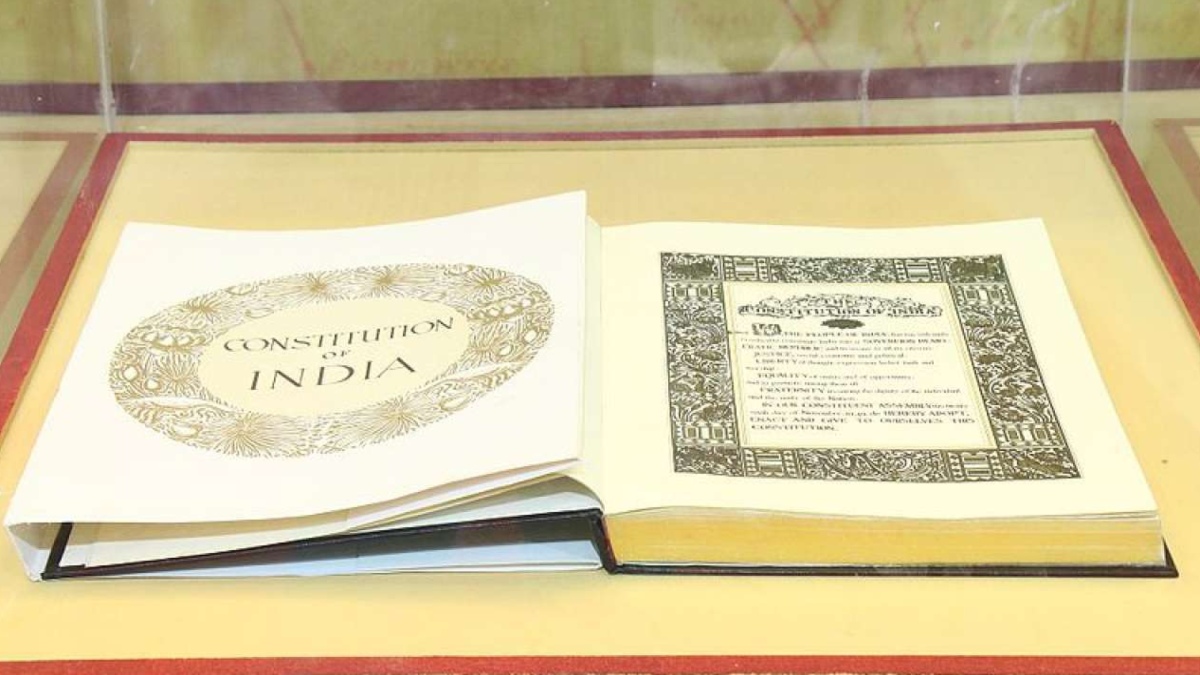
INTRODUCTION
Amidst what is written and said, sometimes there exists a silence which is more significant. The term ‘Constitutional silence’ has been extensively discussed by Lawrence H. Tribe in his celebrated work ‘Invisible Constitution’. In his words contrary to the belief of many, the impact and extent of a written constitution is not very compelling. He further says that many principles which form the constitutional bedrock of America never made it to the text of the nation’s Constitution. Therefore, silence can be comprehended as giving voice to what was left unwritten when the Constitution was drafted and enacted. But these interpretations would never have been rejected by the makers of this hallowed document. Various scholars have described these silences as ‘gaps and abeyances’ and consider it a method of adjudication. In his book ‘The Silence of Constitutions’ Michael Foley calls these abeyances as valuable. These silences are a gold mine because they play a significant role in determining the role of the Constitution as much as the codified components. According to Martin Loughlin, the administration’s desire to remove uncertainties will smother the silences of the Constitution. It is important to appreciate silences because if the silence is done away with a sword of Damocles will hang over the Constitutionalism.
CONSTITUTIONAL SILENCES IN THE INDIAN CONSTITUTION
In words of Justice Benjamin Cardozo, “the generalities of Constitution have a context and a significance that vary from age to age.” The silence in some areas is deliberate. Gaps should simply not be seen as a void space. The Constitution of India is called ‘a living tree’ because it evolves, grows and is capable of adapting itself to the needs and wants of the country. The idealistic and perfectionist approach makes the Constitution a ramrod. Ours is a transformative Constitution therefore the silences are imperative.
The Constitution has been silent on a lot of issues but through judicial interpretation a lot of new rights have emanated. The ambit of the term ‘other authorities’ in Article 12 has expanded leaps and bounds over the years. In the landmark case of Sukhdev Singh v Bhagatram Sardar Singh Raghuvanshi, ONGC, LIC and IFC were included in the definition of state.
Article 14 was incorporated to bestow upon the citizens the right to equality and equal protection of law. Now it encompasses the test of ‘manifest arbitrariness’ and every law that is formulated has to be tested on this whetstone. The inclusion of right to press under Article 19(1)(a) is another example. There was a difference in the views of the framers regarding its status. The Constitution remained silent on this so that the future generations can choose to incorporate it if the need be.
Similarly, the Supreme Court of India through its trailblazing judgements has given new dimensions to the Article 21 whose meaning was once constricted only to mere physical existence and personal liberty. Aspects like dignity, education, livelihood, food, shelter, fair trial etc. have been incorporated under the umbrella of ‘life and liberty’. Although these words were nowhere mentioned in the Article but they were the need of the hour. Recently through the K. S. Puttaswamy (Retd.) v Union of India, the right to privacy became an inalienable part of ‘life and liberty’.
Article 156 lays down that the governor enjoys his office at the pleasure of the President. His removal cannot be on whimsical grounds. Doctrine of pleasure is subjected to the principles of Constitutionalism. In B.P Singhal v Union of India, a Constitutional bench laid down certain principles which restrict the removal of governor purely at the will of the President. The reasons for removal have to be compelling. The Articles of the Constitution dealing with the assent by President or Governor to a bill does not stipulate a fixed time period. Only because the constitution is silent it does not mean that one can act capriciously. It has to be done in a reasonable time.
The Basic Structure Doctrine itself was a result of interpretation of this silence by the Supreme Court. The recent examples of the same include the wide interpretation given to the definition of ‘sex’ to include the third gender in the National Legal Services Authority v Union of India. These are a few examples where though the Constitution is silent but the sounds of silence can still be heard. These silences should be filled with constitutional morality and by developing proper conventions and the legislature and the judiciary have been entrusted with this responsibility.
CONCLUSION
The Constitution itself is incapable of speaking like an oracle but its voice can be heard through various judicial interpretations. These silences also enable the legislature to amend the Constitution as per the changing socio-political dynamics of the country. It is not merely the fundamental law of the land meant for doing away with the existing conflicts within a law. Rather it is a document in which the spirit of the nation pulsates. Therefore, the framers of the Constitution left it for the generations to come to interpret the document as per the changing time and much of success can be accorded to these blanks within the Constitution. To conclude the author would like to quote the immortal sentiments of Hidayatullah J. where he says, “more freedom exists in interpreting of Constitution because in domain of Constitutional law there is again and again novelty of situation and approach.”
Legally Speaking
Judicial intervention in Arbitration: A reality or a Myth?
Published
3 days agoon
October 20, 2021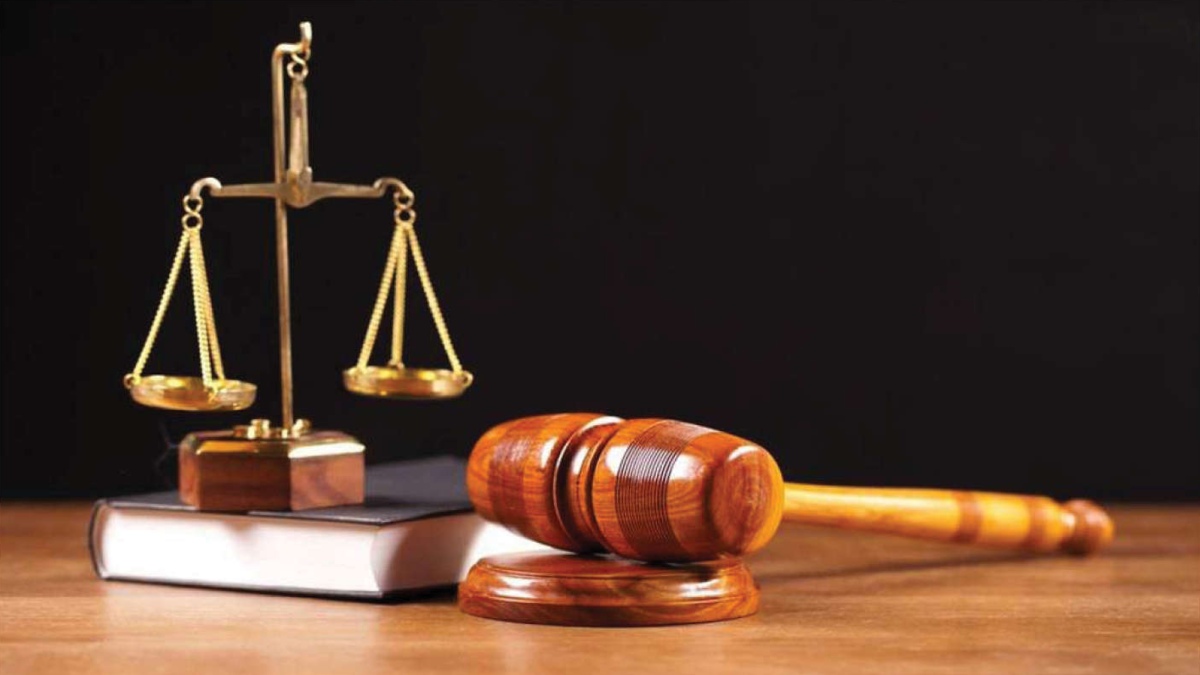
INSIGHT OF ADR
Alternate dispute resolution techniques are no doubt the future of the country what is in the world and the advancement of legal and judiciary system starts from here only. During the Covid times the ADR sector and its use has been exponentially increased and the awareness about this sector or technique has also been realized or known to the general public. The ADR techniques not only are efficient but also work as a speedy redressal of disputes mechanism in which the parties to the suit do not have to measure the walls of the court rooms rather sit in a place and decide the possible outcomes of the conflict mutually or less formally. Undoubtedly these techniques are now a new normal and one of the most preferred way of dispute resolution since it involves various dispute redressal mechanisms like mediation, negotiation, conciliation and arbitration along with another miscellaneous method of resolution of disputes like Lok Adalat. The ADR techniques are very in famous for solving the disputes between the parties in a very short span of time and very effectively with considering the interests of both the parties in the suit.

ARBITRATION IN ADR
“Arbitration” is defined in Section 2 of the Arbitration and Conciliation Act of 1996 as “any arbitration, whether or not administered by a permanent Arbitral Institution, and (b) “Arbitration Agreement,” means an agreement referred to in Section 7.” Basically, when we talk about resolving disputes with the help of ADR techniques or arbitration for that matter it is a process in which resolution of disputes is done outside the court premises the conflict will be decided and enumerated by the parties to the suit or the conflict and this present conflict of dispute will be decided by the persons authorized by the court they are known as arbitrators or arbiters or arbitral tribunal which renders the arbitration award. The arbitration award is basically legally binding on Courts as well as on the parties and also enforceable in the courts. With the goal of resolving disputes quickly, it is critical that arbitral cases be determined only on the basis of affidavits and other relevant papers, rather than on the basis of witness testimony.
Arbitration Agreement: A pertinent aspect
Arbitration agreement is also very pertinent aspect when it comes to the enforcement of arbitration has a resolution of dispute mechanism since in the absence of any consensual agreement between the parties to the suit the jurisdiction of arbitration as a resolution process cannot be invoked in any of the matter unless and until there is a pre-existence of a specific agreement clause or an agreement to decide the dispute through ADR or arbitration for that matter. However, invoking or incorporating an arbitration clause in the agreement is the best way to invoke the arbitration award right after the dispute arises. Calling to the principle of severability the two agreements can come into the effect if the first one will be the main agreement between the parties and the second one will be a mere agreement of arbitration or a close to refer all the disputes related to the contract which may arise in the future be settled through the mode of arbitration. Once the arbitration award has been passed it is binding on both the parties along with the court of law.
Judiciary and Arbitration
Since ADR techniques are a part and parcel of judiciary or rather speedy redressal of disputes mechanism so it is very obvious that judicial intervention under arbitration is a facet of smooth running of ADR techniques. Although As per Section 5 of Arbitration and Conciliation Act 1996, “Notwithstanding anything contained in any other law for the time being in force, in matters governed by this Part, no judicial authority shall intervene except where so provided in this Part.” This section tries to define that there is no scope of judicial intervention when it comes to arbitration proceedings. Since arbitration award includes the intervention of judiciary or judicial authority into the arbitration proceedings this can be called as a vague statement or provision.
Usually the judicial authority or courts does not interrupt in between any arbitration proceedings or arbitration award first handedly. The concept of non-intervention is typically based upon the premise that when both the parties do any contract by their own consensual act have planned to resolve the disputes by the way of arbitration or ADR techniques by invoking any arbitration clause or mediation clause the judiciary and the situation would not have any valid reasoning to intervene in the due process of arbitration or any other ADR technique.
The Section 8 of Arbitration and Conciliation Act, 1996 it says If the parties enter into an Arbitration Agreement, the judicial courts shall, at the outset, refer any case presented before them to arbitration for consideration. Generally, judicial courts enjoy the pecuniary powers to intervene or to recognise and consider any matter where it feels any need of prima facie consideration or where there is no valid contract of arbitration is there between the parties and in this matter any of the parties may file a court complaint with the Original Arbitration Agreement or a duly approved copy of the Contract.
In a case where one of the party to the suit does not provide or possess any arbitration contract or agreement the provisions of Arbitration and conciliation act gives the court of law exhaustive powers to entail all such matters for intervention in arbitration matters. When the court is satisfied that the applying party does not have a copy of the Arbitration Agreement and will not obtain one in the normal course of arbitral proceedings, it has the power to engage and give appropriate orientation to the other party to start producing the Original Arbitration Agreement or its duly signed copy. However, the court’s minor action in instructing the other party to provide an original arbitral award or a certified true copy of the agreement before the court does not preclude the parties from referring the case to arbitration. Section 27 of the Act was implemented to (a) seek the Court’s assistance in receiving evidence and carrying out the order placed by the arbitral tribunal or the parties with the arbitral tribunal’s approval; and (b) assist the arbitral tribunal or a party in taking evidence in order to expedite the arbitral proceedings. As an arbitration court does not have the authority to issue witness summons, enforce the appearance of eyewitnesses, or compel the submission of materials, such assistance or, as Section 27 of the Act puts it, “execution” of the arbitral tribunal’s request is considered important and required. As a result of the arbitral tribunal’s lack of coercion powers, the parties must not pay.
The court also enjoys some other instances where it can step in between the arbitration proceedings which has been enumerated in Section 34 of the Arbitration and Conciliation Act, 1996 mentions the grounds on which an arbitration award can be set aside, which says that the judicial court enjoys pecuniary powers to set aside any arbitral award when it proves that-
• Either party to the arbitration has been rendered incompetent at some point throughout the procedures.
• Any arbitration clause utilised to secure an arbitral award is void under the law if it fails to pass the test of any notice made under the law to which the parties have agreed;
• Arbitration proceedings or any arbitral award in which the arbitration proceedings or any arbitral award did not follow the fair practises of law and it was proven by any party that one of the parties was not given appropriate notification of the selection of the Arbitrator;
• When all parties to the dispute are not properly informed about the arbitral process;
• If all parties are not given a proper and equal opportunity to state their case before the arbitrators, and any party’s right to justice is violated;
• If the arbitral award addresses a subject not covered by the arbitration agreement;
• If the arbitration agreement’s terms of reference were misinterpreted, mis-referred to, or disregarded while rendering an arbitral award;
• If the makeup of the arbitral award panel is not in accordance with the arbitration parties’ accord;
• If the arbitration award has made determinations on such subjects that are outside the scope or course of the arbitral submission. Only that portion of the arbitration awards that is out of context or relation may be thrown aside in this situation.
• In case the arbitrators’ procedure does not correspond to the procedure agreed upon by the parties;
• If the arbitrators’ method is in violation of the act’s policy framework;
• If the court determines that the subject matter of any arbitral award is such that it cannot be decided or settled by arbitration, the court may intervene.
• Any award that has been delivered has been influenced or inspired by fraud, corruption, or a violation of any law;
Any arbitration award that is in violation of any fundamental Indian law principle;
If any award violates the fundamental principles of morality, justice, or equity;
An arbitral award made outside of International Commercial Arbitration can be set aside by the relevant court if the court considers that the award is tainted by the law, or that it spoils or destroys legal principles, as it may look incorrect on the face of the decision.
These are some of the instances where judicial courts tried to intervene in the arbitration proceedings and enjoys enough power through The Arbitration and Conciliation Act, 1996 or correct to suggest amends in the arbitral proceedings or arbitral award for that matter if any omission or wrongful act has been noticed by the competent court. Only one of the grounds given out in Section 34(2)(a) or (b) can be used to overturn an arbitral judgement, effectively cementing the fact that if the request cannot hold within the confines specified by the sections, the petition has no standing. Due to the Act’s assertion on sovereign immunity, the majority of arbitral tribunals are ad hoc, and the lack of a streamlined system or qualified arbitrators has failed to achieve its goal of expeditious and economical resolution of disputes, as well as its goal of reducing the line of people flapping their dockets in a litigated case. Because most arbitrators appointed under Section 11 of the Act are retired judges, they rely on long-standing processes and arguments based on their expertise on the bench, resulting in a lengthy and gruelling process that is very similar to a court trial. Further it is to be mentioned that sometimes in the ongoing arbitral proceedings D advocates of both the parties try to procure unnecessary adjournments or raise unnecessary objections which may deter the proceedings to the suit and that’s why some scope of judicial intervention is necessary too.
Instituting the arbitral persons
The appointment of the arbitrators to the suit has been duly inaugurated under Section 11 of Arbitration and Conciliation Act, and the powers to appoint the arbitrators has been conferred in the hands of judiciary only. The 2019 amendments carried out the subtle thrust that the 2015 amendment indicated at through Section 11 (6)(B), which states that delegating of the ability to designate arbitrators does not imply delegation of judicial power. The clause calls for the establishment of specific arbitral institutions in India to take over the role of appointing arbitrators who have been recognised or graded by the Arbitral Council of India. As a result, any appeal that would have been made with the Supreme Court or the High Court must now be lodged with the arbitral institutions authorised for this purpose by the court with jurisdiction.
However in the matter of NTPC v Decona Services Pvt Ltd. The Supreme Court established the principle of minimum judicial interference and laid emphasis on the underlying principle of interpretation of the provisions of the Arbitration act. The apex court also involved into the arbitration awards and matters and numerate it that the courts must not sit in the appeal over arbitral proceedings or awards and the scope of intervention under Section 30 and 33 of the Arbitration and Conciliation Act, 1996 is very minimal. The Court’s Decision turned out to be a significant reassertion of the need of limited judicial intervention in the arbitral proceedings and the sanctity of arbitral awards.
We can say that the arbitration or the other ADR techniques or a facet of judiciary all the judicial justice system and included in the speedy dispute resolution process they are a part of judiciary. There is always a scope of intervention by the judiciary into the matters of arbitration or any other dispute resolution process since it is the judiciary only who keeps a check and balance to all of these proceedings and ensures the proper administration of the speedy redressal of the disputes. It is the judiciary only who takes the upper hand when it comes to arbitration proceedings only and it is a myth that judicial intervention is at every step in the arbitration proceedings since arbitration proceedings are also given a free hand when it comes to smooth functioning of the proceedings in case any dispute arises out of the proceedings then the judiciary has to interfere in the matter.
Legally Speaking
CIVIL DISPUTE GIVEN COLOUR OF CRIMINAL OFFENCE: SC SAYS CRIMINAL PROCEEDINGS SHOULD NOT BECOME WEAPONS OF HARASSMENT
Published
4 days agoon
October 19, 2021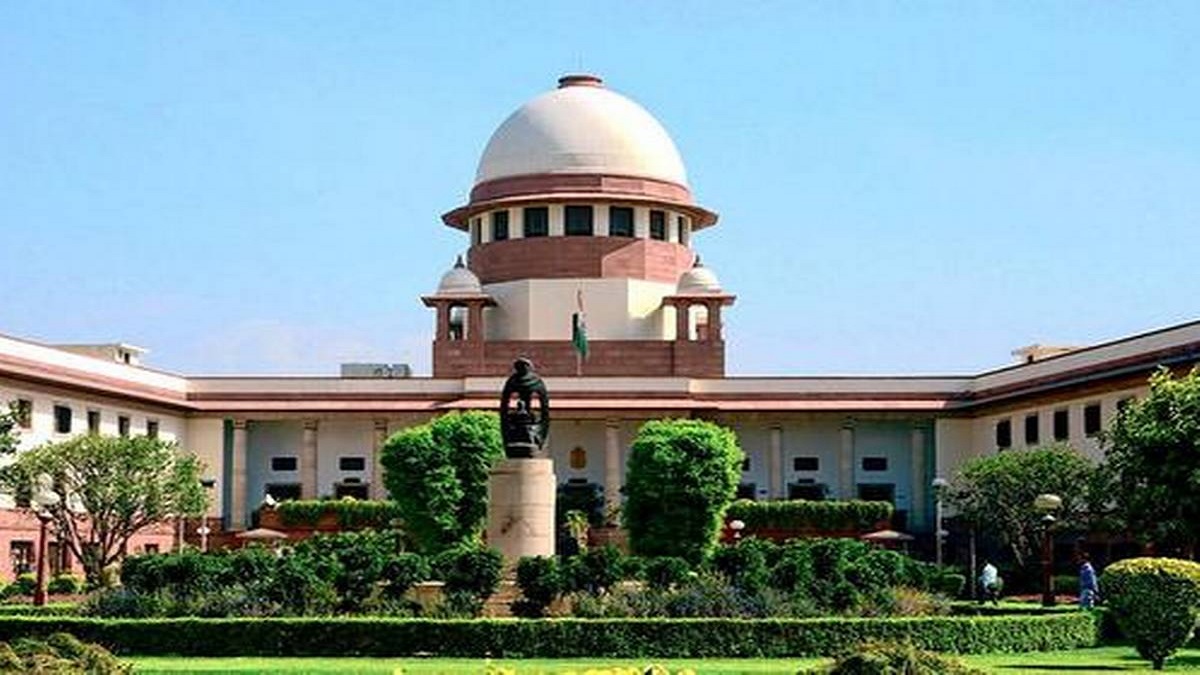
While sending a loud and clear signal that criminal proceedings should not become weapons of harassment, the Supreme Court in a learned, laudable, landmark and latest judgment titled Randheer Singh vs The State of UP & Ors in Criminal Appeal No. 932 of 2021 (Arising out of SLP (Crl.) No. 1190 of 2021) With Criminal Appeal No. 933 of 2021 (Arising out of SLP (Crl.) No. 4237 of 2021) delivered on September 2, 2021 while quashing criminal proceedings initiated against a property purchaser observed that dispute of a civil nature has been given colour of criminal offence. It must be apprised here that the Bench of Apex Court comprising of Justice Indira Banerjee and Justice JK Maheshwari observed that while considering a petition seeking quashing of criminal proceedings, the High Court should examine whether a complaint discloses criminal offence or not depends on the nature of the allegation and whether the essential ingredients of a criminal offence are present or not. The Bench reiterated that Section 482 is designed to achieve the purpose of ensuring that criminal proceedings are not permitted to generate into weapons of harassment.
To start with, this brief, brilliant, bold and balanced judgment authored by Justice Indira Banerjee for herself and Justice JK Maheshwari sets the ball rolling by first and foremost observing in para 1 that, “This appeal is against a judgment and order dated 15th December, 2020 passed by the High Court of Judicature at Allahabad dismissing the application of the Appellant under Section 482 of the Code of Criminal Procedure (hereinafter referred to as the ‘Cr.P.C.’).”
To put things in perspective, the Bench then puts forth in para 3 that, “As recorded in the judgment and order impugned, the application under Section 482 of the Cr.P.C. had been filed for quashing of proceedings in Crime Case No.5973/2020 (State v. Rajan Kumar) under Sections 420, 467, 468 and 471 of the Indian Penal Code (hereinafter referred to as the ‘I.P.C.’), Police Station Shahpur, District Gorakhpur pending in the Court of the Additional Chief Judicial Magistrate, IIIrd District Gorakhpur and also to quash the charge sheet dated 18th January, 2020 and summoning order dated 26th June, 2020. The High Court has, in detail, recorded the arguments of the applicants which are very briefly summarised hereinbelow :-
(i) The case lodged was false and baseless;
(ii) Charge-Sheet had been submitted without proper investigation and evidence;
(iii) No prima facie case was disclosed against the applicants.”
Simply put, the Bench then states in para 4 that, “It is the case of the Appellant that one Arjun Dev and his wife Bela Rani were recorded as Bhumidhar of Plot No. 971M area 918 Aire (hereinafter referred to as the ‘plot in question’) and that they had executed a registered Power of Attorney in favour of the Applicant No.1 Rajan Kumar, who has since died.”
Adding more, the Bench henceforth observes in para 5 that, “It is said that on the basis of the said Power of Attorney, the said Rajan Kumar (since deceased) executed sale deeds in favour of the Appellant and his family members on 16th July, 2014, 1 st August, 2014, 6th August, 2014 and 23rd July, 2014, pursuant to which, the name of the Appellant and others were mutated in the Revenue records.”
Needless to say, the Bench then lays bare in para 6 that, “From the facts, as recorded in the judgment and order under appeal, it appears that during the mutation proceedings, one Smt. Beena Srivastava had filed objections before the Naib Tehsildar but the same were rejected and the property was duly mutated in favour of the Appellant and his family members by an order dated 28th February, 2015.”
Simply stated, the Bench then says in para 7 that, “Smt. Beena Srivastava filed an Original Suit No. 971 of 2014 for cancellation of the Power of Attorney dated 4th June, 2014 and the sale deeds executed by Rajan Kumar (since deceased) in favour of the Appellant and his family members but that suit was dismissed under Order VII Rule 11 of the Code of Civil Procedure, by order dated 18th September, 2015.”
As it turned out, the Bench then discloses in para 8 that, “The order dated 18th September, 2015 was challenged in First Appeal No.531 of 2015 before the High Court. That appeal was partly allowed by an order dated 26th November, 2015 with a direction on the Trial Court to return the plaint of the plaintiff for presentation before the appropriate Court.”
As we see, the Bench then brings out in para 9 that, “Being aggrieved by the order of the High Court dated 26th November, 2015, Smt. Beena Srivastava, approached this Court by filing Special Leave Petition (Civil) No. 2848 of 2016 which had been dismissed by an order dated 8th September, 2016. From the judgment and order impugned, it appears that it had been submitted before the High Court that Chandra Prakash Srivastava and Smt. Beena Srivastava had also filed a Contempt Application No. 706 of 2016 which had been dismissed by an order dated 10th February, 2016. Before the High Court, it was submitted that when Beena Srivastava could not get any relief from the Trial Court right upto this Court, she filed a Writ Petition No. 12275 of 2016 which had also been dismissed by an order dated 28th March, 2016. The said Beena Srivastava’s son, Dr. Virat Swaroop Saxena also filed a contempt application which had been dismissed by an order dated 29th July, 2016.”
Of course, the Bench then puts forth in para 10 that, “Pursuant to the order dated 28th March, 2016 passed by the High Court in Writ Petition No.12275/2016, the Appellant instituted Original Suit No.608 of 2016 in the Court of Civil Judge, Senior Division, Gorakhpur for permanent injunction in respect of the plots in question. It appears that by an order dated 12th April, 2016, temporary injunction had been granted in favour of the Appellant. This is recorded in the judgment and order under appeal.”
Be it noted, the Bench then envisages in para 16 that, “There can be no doubt that the jurisdiction under Section 482 is not exercised for the asking, it is exercised with care in exceptional cases. The scope of interference with an FIR is much more restricted and ordinarily the Court does not interfere under Article 226 of the Constitution of India, when there is an alternative remedy available to the applicant. Furthermore, from the tenor of the order of the High Court rejecting the writ petition, it is patently clear that one of the reasons why the High Court did not intervene at that stage was that the Police report had also not been submitted. The Police report has since been submitted and the charge sheet has been filed. It is true that about 12-13 witnesses have been named. However, the said Bela Rani who executed the Power of Attorney has not even been cited as a witness. Apparently, the said Bela Rani was not even examined by the Investigating Authorities.”
For the sake of clarity, the Bench then observes in para 17 that, “In this appeal, we are not concerned with the underlying civil disputes between the parties which are the subject matter of diverse civil proceedings which are pending between the Appellant and the private respondent in the concerned civil courts. All those civil suits will obviously be decided on their own merits.”
No doubt, the Bench then rightly adds in para 18 that, “The only question is whether there is any criminal offence disclosed in the FIR so far as the Appellant is concerned. When the High Court passed its order dated 5th October, 2017, Rajan Kumar (since deceased), the executant of the sale deed and the Power of Attorney holder was also an applicant before the Court. Today, there has been a change in situation, in that, criminal proceedings against Rajan Kumar have abated since Rajan Kumar is no longer alive. It is the case of the private respondent that the private respondent purchased property. In the meantime, Rajan Kumar, who is no longer alive, on the basis of a false Power of Attorney of Bela Rani, executed a sale deed in favour of Randheer Singh, i.e., the Appellant herein. There is only a vague averment “by connivance”. The next part of the sentence reads “Bela Rani had no right to sell the aforesaid plot.”
Quite rightly, the Bench then points out in para 19 that, “As recorded in the judgment and order, the property in question has even been mutated in the name of the Appellant. Of course, mutation records are not a document of title. Whether Bela Rani had title, whether she validly executed a power of attorney, whether any right has accrued to the Appellant, are matters for the civil court to adjudicate.”
Without mincing any words, the Bench then states in para 22 that, “The charge sheet is totally vague. There is not even a whisper in the charge-sheet of what transpired from the investigation against the Appellant herein.”
To be sure, the Bench then stipulates in para 23 that, “Even though an FIR need not contain every detail, an offence has to be made out in the FIR itself. It is the case of the Private Respondents that Bela Rani has no title. Bela Rani executed a false Power of Attorney in favour of Rajan Kumar (since deceased). Alternatively, the Power of Attorney, in itself, was a forged document.”
Quite forthrightly, the Bench then quite aptly hastens to add in para 24 that, “A fraudulent, fabricated or forged deed could mean a deed which was not actually executed, but a deed which had fraudulently been manufactured by forging the signature of the ostensible executants. It is one thing to say that Bela Rani fraudulently executed a Power of Attorney authorising the sale of property knowing that she had no title to convey the property. It is another thing to say that the Power of Attorney itself was a forged, fraudulent, fabricated or manufactured one, meaning thereby that it had never been executed by Bela Rani. Her signature had been forged. It is impossible to fathom how the investigating authorities could even have been prima facie satisfied that the deed had been forged or fabricated or was fraudulent without even examining the apparent executant Bela Rani, who has not even been cited as a witness.”
While citing the relevant case law, the Bench then states in para 29 that, “In Uma Shankar Gopalika (supra), this Court found that the complaint, in that case, did not disclose any criminal offence at all, much less any offence under Section 420 or Section 120B IPC. The case was purely a civil dispute between the parties for which remedy lay before the civil Court.”
In yet another case law, the Bench then holds in para 32 that, “In Kapil Agarwal (supra), this Court observed that Section 482 is designed to achieve the purpose of ensuring that criminal proceedings are not permitted to generate into weapons of harassment.”
Most significantly, what forms the cornerstone of this notable judgment is that the Bench then minces no words to hold in para 33 that, “In this case, it appears that criminal proceedings are being taken recourse to as a weapon of harassment against a purchaser. It is reiterated at the cost of repetition that the FIR does not disclose any offence so far as the Appellant is concerned. There is no whisper of how and in what manner, this Appellant is involved in any criminal offence and the charge sheet, the relevant part whereof has been extracted above, is absolutely vague. There can be no doubt that jurisdiction under Section 482 of the Cr.P.C. should be used sparingly for the purpose of preventing abuse of the process of any court or otherwise to secure the ends of justice. Whether a complaint discloses criminal offence or not depends on the nature of the allegation and whether the essential ingredients of a criminal offence are present or not has to be judged by the High Court. There can be no doubt that a complaint disclosing civil transactions may also have a criminal texture. The High Court has, however, to see whether the dispute of a civil nature has been given colour of criminal offence. In such a situation, the High Court should not hesitate to quash the criminal proceedings as held by this Court in Paramjeet Batra (supra) extracted above.”
What’s more, the Bench then goes on to forthrightly add in para 34 that, “The given set of facts may make out a civil wrong as also a criminal offence. Only because a civil remedy is available may not be a ground to quash criminal proceedings. But as observed above, in this case, no criminal offence has been made out in the FIR read with the Charge-Sheet so far as this Appellant is concerned. The other accused Rajan Kumar has died.”
As a corollary, the Bench then holds in para 35 that, “The appeal is, thus, allowed. The impugned judgment and order of the High Court is set aside and the proceedings in Crime Case No.5973/2020 are quashed as against the Appellant.”
CRIMINAL APPEAL NO. 933 OF 2021
Truth be told, the Bench then holds in para 37 that, “The issues involved in this appeal are identical to the issues involved in Appeal No. 932 of 2021 disposed of earlier today. We may add that in this case, the Appellants are only witnesses to the sale deed and there is not a word anywhere in the FIR about these witnesses except the vague averment that they acted in collusion.”
Finally, it is then held in para 38 that, “For the reasons discussed in Criminal Appeal No. 932 of 2021, this appeal is also allowed and Crime Case No.5973 of 2020 is set aside so far as these Appellants are concerned.”
In sum, the Apex Court has made it very crystal clear in this leading case that it will not allow ever a civil dispute to be given a colour of criminal offence. The Bench also makes it amply clear that all precautions must be taken to ensure that criminal proceedings should not become weapons of harassment. All the courts must always abide to what has been laid down by the Apex Court in this noteworthy case so cogently, commendably, composedly and convincingly! There can be just no denying it!
Sanjeev Sirohi, Advocate
Legally Speaking
CYBER CRIME: A SPIDER, EXPANDING ITS WEB WITH EVERY NEW TECHNOLOGICAL ADVANCEMENT
Published
4 days agoon
October 19, 2021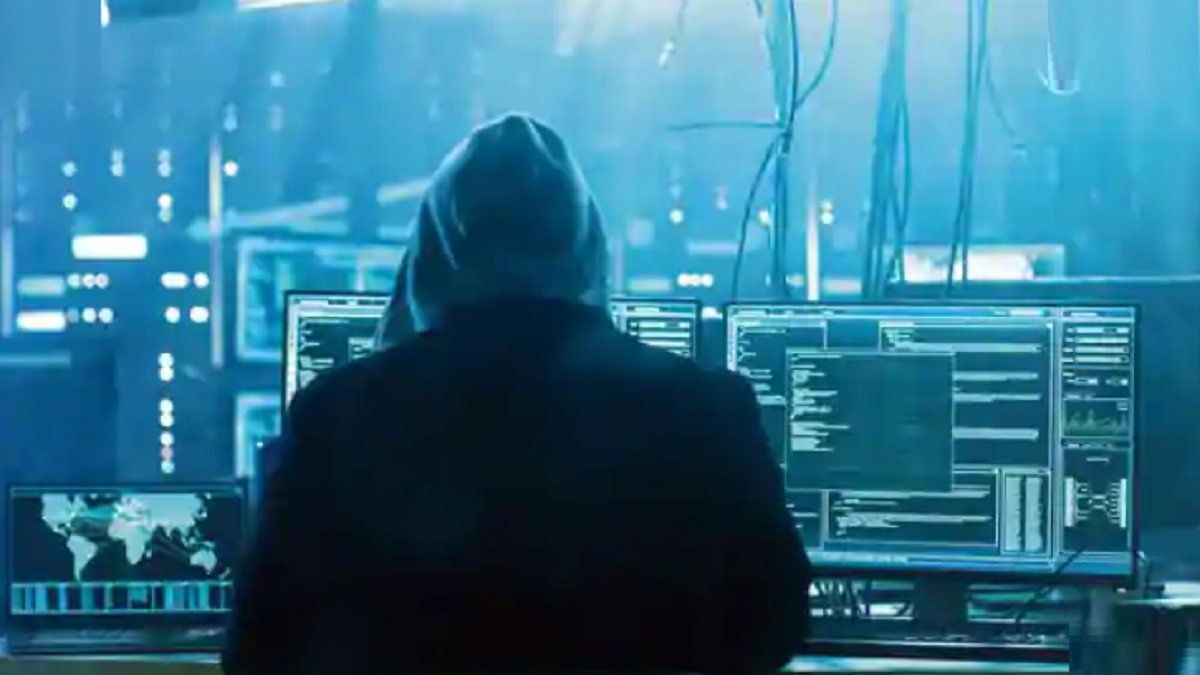
In the past few decades, the world has become heavily dependent on information technology. With this we also come across the various instances of cyber crime where it is not just limited to being a mere computer crime but has a huge impact on the society as well. With our maximum number of tasks being performed through the medium of internet it exposes a lot of private data to the network. It has also resulted in becoming an evident threat to an individual’s privacy. The openness and unboundedness of the network has made it easier for the criminal to escape, he goes unchecked as the legal provisions remain superfluous. It has overtaken the conventional infrastructures be it of cables, voice industry, broadcasters, or the print world. It has turned out to be a new opportunity for the criminal mind. Another arena of intellectual property has also been severely affected by it. There is an abundance of information on the internet and this leads to poor patent quality, more copyright and trademark infringements. It even results in a negative impact on the prosecution procedure as the workload and pressure of the patent examining authorities is increasing with the rising number of issues related to the same. The amount of information on the internet is mammoth and this has even affected the economic factor as the cost of retrieving the relevant data has risen up. The problems concerning theft of data through the medium of internet or the unauthorised publication of some one’s work has become a common issue. The easy ways of cut, copy and paste has blurred the boundaries between original and copied work. The storage of vast amounts of data has resulted in its mass copying by uncountable netizens. The criminals take advantage of anonymity on the platform and resort to various ways of defrauding people. Expanding horizons of internet and digitization has resulted in an entire new generation of crimes- the cyber-crimes.
In the contemporary times, computer glitches, cyber crimes and informational harms rising rapidly. The investigation process which involves fact finding and the search for truth is facing legal, technical, operational, and political challenges on its path. To check the behaviour of an individual online and to achieve the purpose of criminal law traditional laws have geared up to some extent and are changing, thereby suiting to the environment of the internet age. To meet the changing legal needs newer technology specific laws are coming in advanced societies. The internet boom has expanded the horizons of criminal activity and has also empowered the non-deviant and inactive criminal to take up new criminal activities which are online. Some of the cyber activities that have been brought within the legal entrenchment are hacking, obscene electronic material, stalking and a few others. But others escape regulation because of their esoteric nature. As it is important for a civilised society to have law similarly it is important to have a legislation to regulate electronic activities. The effect of these crimes is found in the real world though it is committed in the virtual surroundings. However, it is not as easy as it sounds.
In India, cyber laws are contained in the Information Technology Act, 2000, which came into force on October 17, 2000. The main purpose of the Act is to provide legal recognition to electronic commerce and to facilitate filing of electronic records with the Government.
“The existing laws of India, even with the most compassionate and liberal interpretation could not be interpreted in the light of the emergency cyberspace, to include all aspects relating to different activities in cyberspace. In fact, the practical experience and the wisdom of judgement found that it shall not be without major threats and pitfalls, if the existing laws were to be interpreted in the scenario of emerging cyberspace, without enacting new cyber laws. Hence, their is a need for enactment of relevant cyber laws.”
These technological changes have affected jurisdiction and evidence which are two of the most sensitive areas of the legal system.
JURISDICTIONAL ISSUES
In the technological spree it is the worst from of casualty. Jurisdiction has always remained a complex issue in international/ transnational matters but it has become even more of a complex issue in cyber-crimes. The majority of cyber-crimes such as stalking, spamming, unauthorised access etc. are often done remotely from a different country. For example, in the case of United States vs. Ivanov, the statue such as the CFAA was explicitly stated to be applied extraterritorially but in several other statues no such provisions are there and are thus the courts are left to decide with the jurisdictional decisions.
EVIDENCE COLLECTION AND PRIVACY CONCERNS
There has been an unending conflict between the collection of evidence and upholding the privacy of the individual so concerned. Computers in a household are one of the most personal assets of the occupant and illegally searching or seizing them might give rise to serious privacy concerns and might lead to the infringement of one’s personal rights. In the light of the same we would discuss two cases. The first one is a case of the United States of America. In Washington vs. Nordlund, the Washington court of appeals had held that warrants which the describe particularly the likelihood that a computer contains data evidencing a crime must show nexus between the crime and data. In India right to privacy is a constitutional right, safeguarded in several judgements. For example, in the case of People’s Union for civil liberties vs. Union of India, it was held by the supreme court that tapping of phone is a serious invasion of privacy which is a part of the individual’s right to “life and personal liberty” and these rights cannot be taken away in by the state except in cases of public emergency.
It can be observed that there exists a policy vacuum regarding how computer technology should be used. Adequate policies must exist for conduct in these situations i.e., policies should be formulated to guide the actions of the users of the network. Another observation made while the research work was done that people are still not fully aware of the correct and safe usages of internet and awareness is required. It is also essential to bring transformations in the traditional laws to suit to the changing times of technological innovations. Digital training for the law enforcement agencies is very much the need of the hour for better functioning of the justice system. Science and technology are an inevitable part of our life and thus the laws also need to evolve accordingly.
Trending
-

 Opinion1 year ago
Opinion1 year agoSouth Block’s mistakes will now be corrected by Army
-

 Sports1 year ago
Sports1 year agoWhen a bodybuilder breaks Shoaib’s record
-
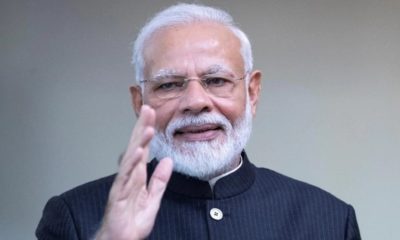
 News1 year ago
News1 year agoPM Modi must take governance back from babus
-

 Spiritually Speaking1 year ago
Spiritually Speaking1 year agoSpiritual beings having a human experience
-

 News1 year ago
News1 year agoChinese general ordered attack on Indian troops: US intel report
-

 Sports1 year ago
Sports1 year agoWest Indies avoid follow-on, England increase lead to 219
-

 Legally Speaking1 year ago
Legally Speaking1 year agoLaw relating to grant, rejection and cancellation of bail
-

 Royally Speaking1 year ago
Royally Speaking1 year agoThe young royal dedicated to the heritage of Jaipur

